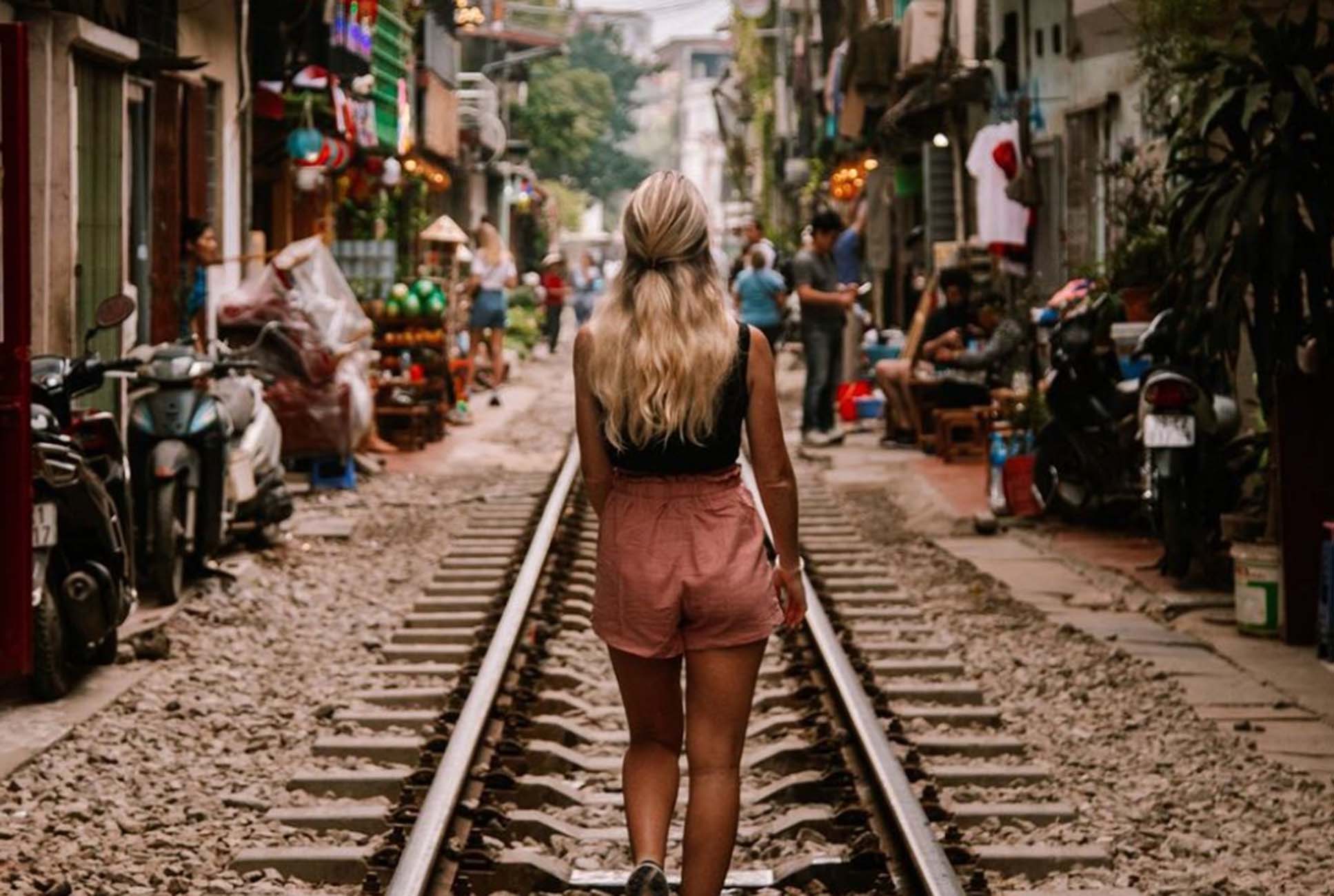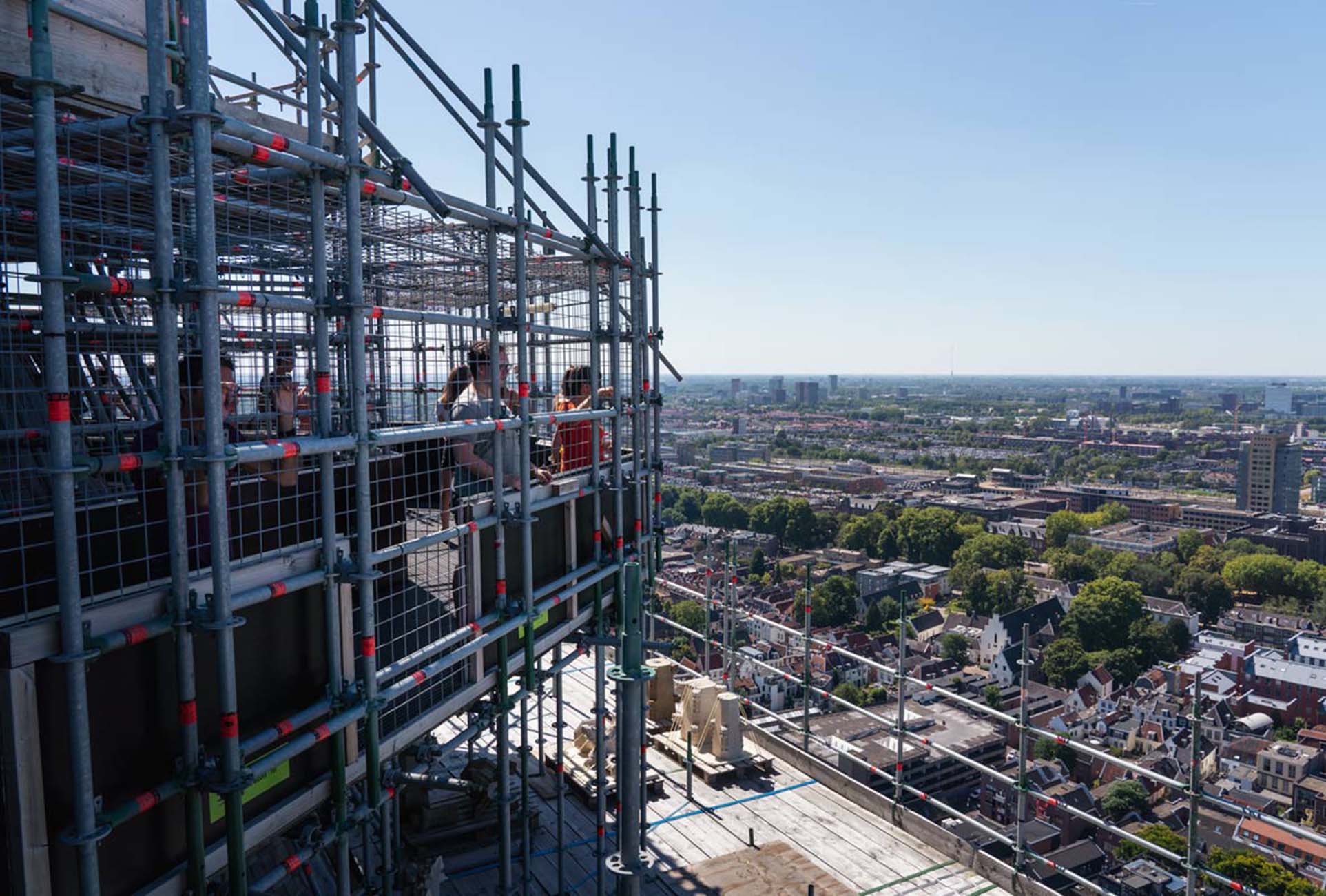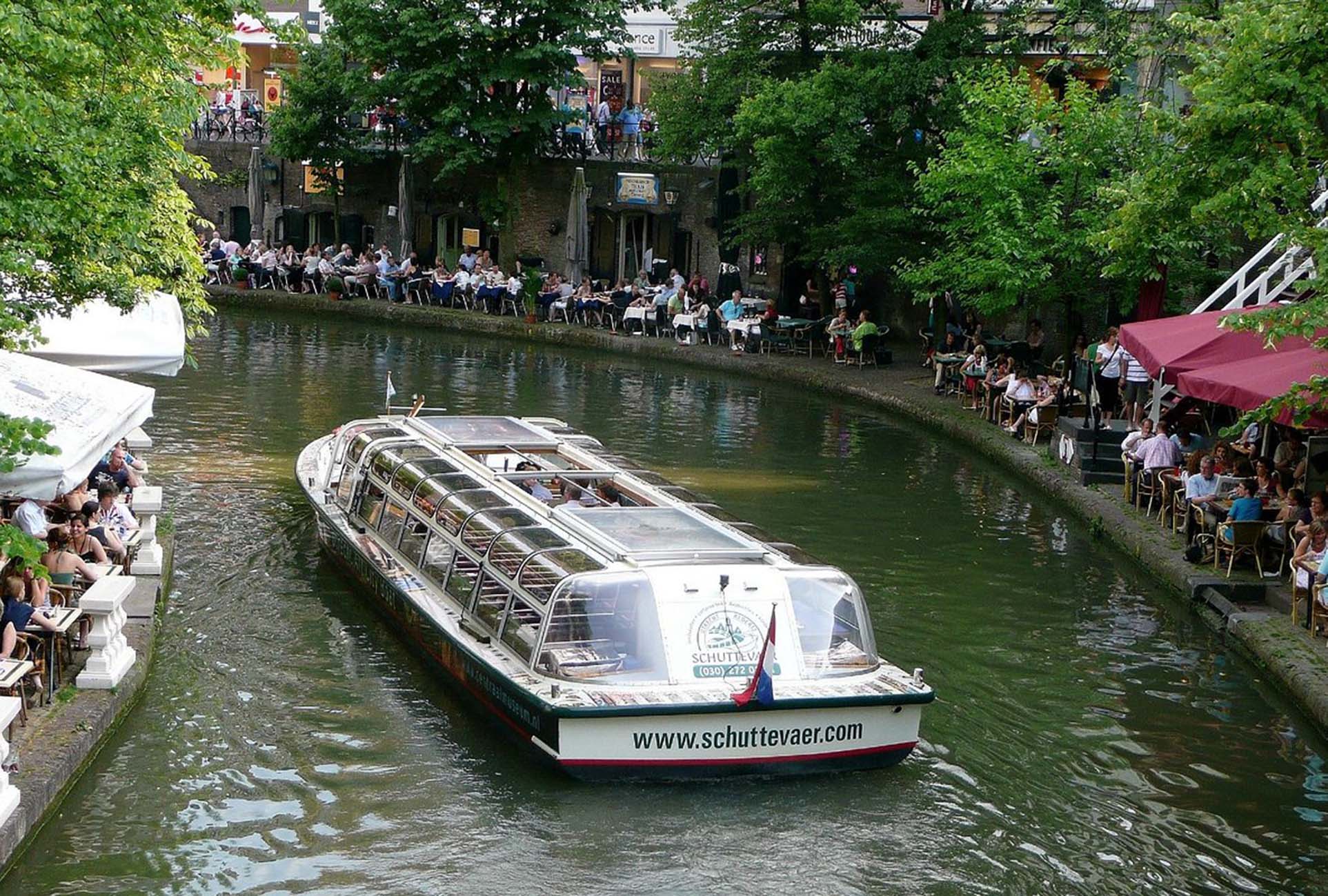I’ve had the privilege of discovering some of the most captivating destinations around the world. One such place that left an indelible mark on my wanderlust-filled heart is Hanoi’s Train Street. This unique spot offers a fascinating blend of history, culture, and an unforgettable experience for any traveler seeking an authentic Vietnamese adventure.
Hanoi Train Street, also known as “Railway Street” or “Train Track Street,” is a unique and popular tourist attraction located in the heart of Hanoi, Vietnam. It is situated in the Old Quarter of Hanoi, specifically on a narrow residential street called Điện Biên Phủ, which runs parallel to Phùng Hưng Street.
The special feature of Hanoi Train Street is that it’s a residential area where the train tracks run literally through the neighborhood. The tracks are just a few feet away from the houses, creating a surreal scene where residents have to temporarily move their belongings and sometimes even themselves when the train passes through.
Visitors are drawn to this location to witness the incredible spectacle of trains passing through this narrow space, providing a unique glimpse into the daily life of the local residents. It has become a popular spot for both tourists and photographers seeking to capture this unusual urban phenomenon.
However, it’s important to note that due to safety concerns, local authorities have imposed restrictions on the access to the tracks.
In addition to the train passage, Hanoi Train Street is surrounded by a bustling neighborhood with various shops, cafes, and street vendors, offering visitors a chance to explore the vibrant culture and atmosphere of the Old Quarter.
Overall, offers a blend of urban life, cultural immersion, and an unforgettable train-watching experience in the heart of Vietnam’s capital city.What to Expect:
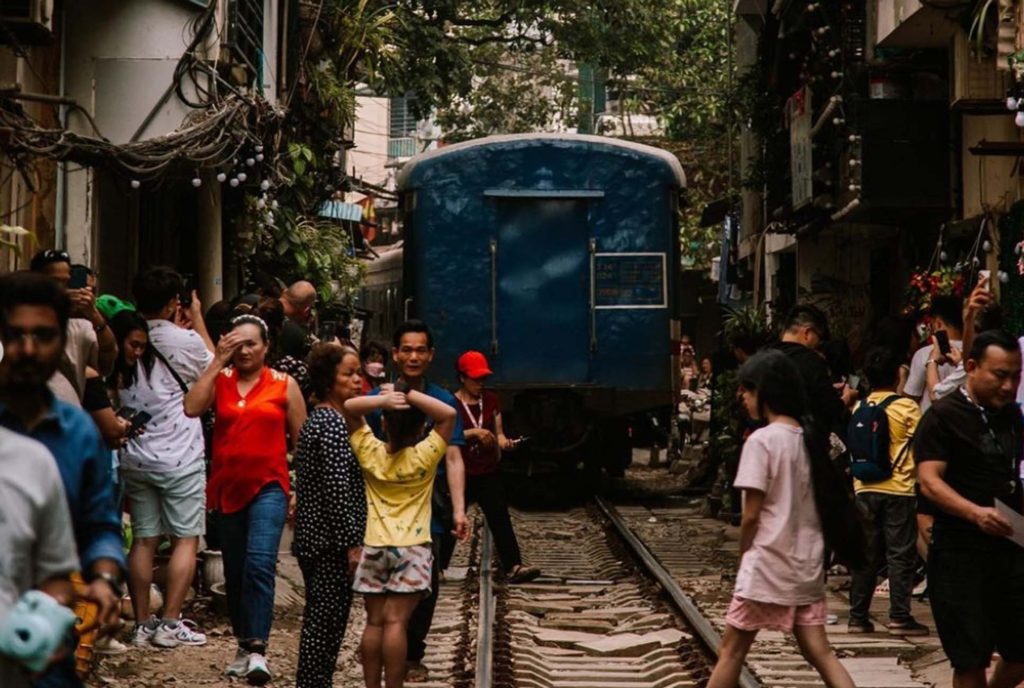
The main allure of Train Street lies in its astonishingly close encounters with passing trains. Twice a day, the vibrant rhythm of life comes to a halt as trains inch their way through this narrow corridor, leaving you with a surreal, exhilarating experience. Cafes, shops, and homes line the street, offering a unique perspective into the daily lives of the locals.
Recommendations for Getting There:
- Flights: If you’re coming from abroad, the best way to reach Hanoi is via Noi Bai International Airport. Several airlines, including Vietnam Airlines, offer regular flights. For the budget-conscious traveler, keep an eye out for promotions and discounts on platforms like Skyscanner or Kayak.
- Airport Transfer: Once you land, it’s advisable to pre-arrange an airport transfer or opt for a reliable taxi service. This ensures a hassle-free journey from the airport to your accommodation in the Old Quarter.
- Accommodation: Consider staying in one of the charming guesthouses or boutique hotels in Hanoi’s Old Quarter. They not only offer a comfortable base but also put you in close proximity to Train Street and other major attractions.
- Local Transportation: Getting around Hanoi is a breeze. Taxis and ride-sharing services are readily available, and cyclos (pedicabs) provide a unique and leisurely way to explore the city.
Flight Recommendations and Comparisons:
- Vietnam Airlines: As the national carrier, Vietnam Airlines provides a wide range of flights to Hanoi. Their service is known for its reliability and quality, ensuring a comfortable journey.
- AirAsia: For budget-conscious travelers, AirAsia often offers competitive prices. Be sure to book in advance to secure the best deals.
- Emirates: If you prefer a premium flying experience, consider Emirates. While it may be pricier, the airline’s renowned service and comfort make it a worthwhile choice for a special occasion.
Hanoi’s Train Street is a living testament to the intertwining of history, culture, and modernity. It’s a place where the past converges with the present, offering a truly unique experience for any traveler. By immersing yourself in the sights, sounds, and flavors of this vibrant enclave, you’re bound to create memories that will last a lifetime. So, pack your bags, book your flight, and get ready for an adventure like no other!
In 2017, when I first set foot in Hanoi’s Railway District, it was a hidden gem, virtually unknown to the masses. The streets were eerily empty, and trains passed by only twice a day.
Armed with a timetable from the locals, we arrived at the Hanoi Train Street, witnessing people hanging laundry, washing motorcycles, and children playing on the tracks. It was a picturesque scene from days gone by.
Despite the absence of any audible warning of approaching trains, the locals’ internal clocks synchronized perfectly with the train schedule. They efficiently gathered their belongings and gestured for us to step back.
In less than a minute, the train roared past us, barely a meter from our faces. It was undeniably one of the most exhilarating experiences of my life.
[2020] Returning in 2020, I was met with a startling transformation. The entire area had morphed into a series of bars. Bars lined both sides of the tracks, and they even increased the frequency of trains to entertain the influx of tourists. The authenticity and essence of Hanoi Train Street seemed lost.
[2023] Fast forward to 2023, and another shift had occurred. A small portion of the tracks now boasts bars (see map👉🏻), where you can stroll when the trains are not in close proximity. While the owners may encourage you to have a drink, it’s entirely optional.
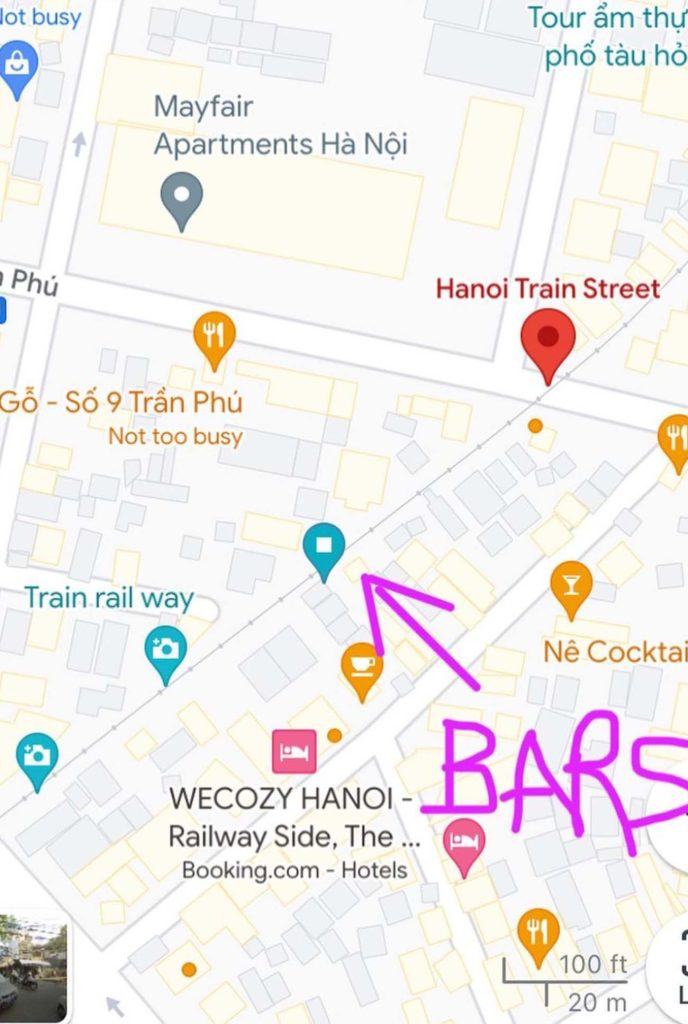
The rest of the tracks have been barricaded from tourists, including the section labeled “Hanoi Train Street” on the map (see map👉🏻).
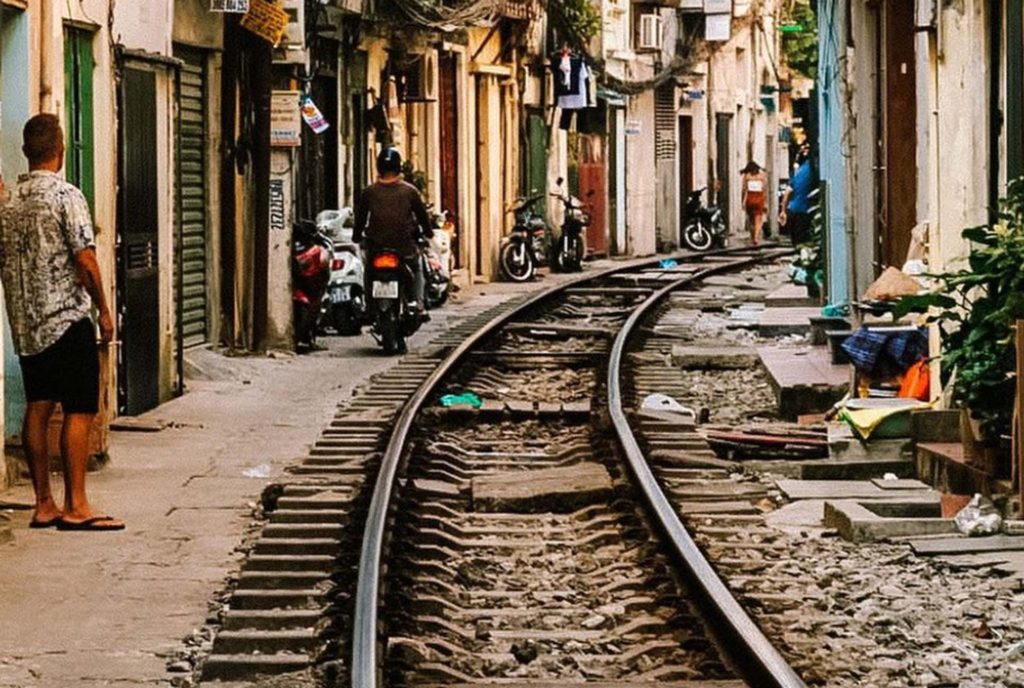
From here, you can capture some stunning shots of the street from the sidelines, and if you time it right, you might witness a train passing by with no tourists on the tracks.
I must say that Hanoi’s Railway District offers more than just the adrenaline rush of a passing train. Here are my recommendations for an unforgettable visit:
Explore the Hidden Alleys
- Take some time to wander through the lesser-known alleys adjacent to the tracks. You’ll discover a more tranquil side of Hanoi.
Sample Local Delicacies
- Don’t miss out on the opportunity to savor authentic Vietnamese cuisine. Street vendors in the vicinity offer delectable treats like pho and banh mi.
Visit the Long Bien Bridge
- This iconic bridge, with its stunning architecture, provides a fantastic view of the Red River. It’s especially enchanting at sunrise or sunset.
Join a Street Photography Workshop
- Hanoi’s Railway District provides an ideal backdrop for honing your photography skills. Consider joining a workshop to capture the essence of this unique location.
Engage with the Locals
- Strike up conversations with the friendly locals. They have fascinating stories to share about the district’s history and evolution.
Hanoi’s Railway District has evolved over the years, yet it continues to be a captivating destination for travelers seeking a blend of history, culture, and a touch of adventure. Embrace the changes, but also take the time to appreciate the remnants of its authentic past.
That’s wonderful to hear that you had such a meaningful experience at Hanoi Train Street! It’s great that you want to share some tips to make others’ journeys smoother. Please go ahead and share your tips below. I’m here to assist if needed!
What’s more,Visiting Hanoi Train Street is a memorable experience, but it’s important to observe local customs and etiquettes:
Best Visiting Times:
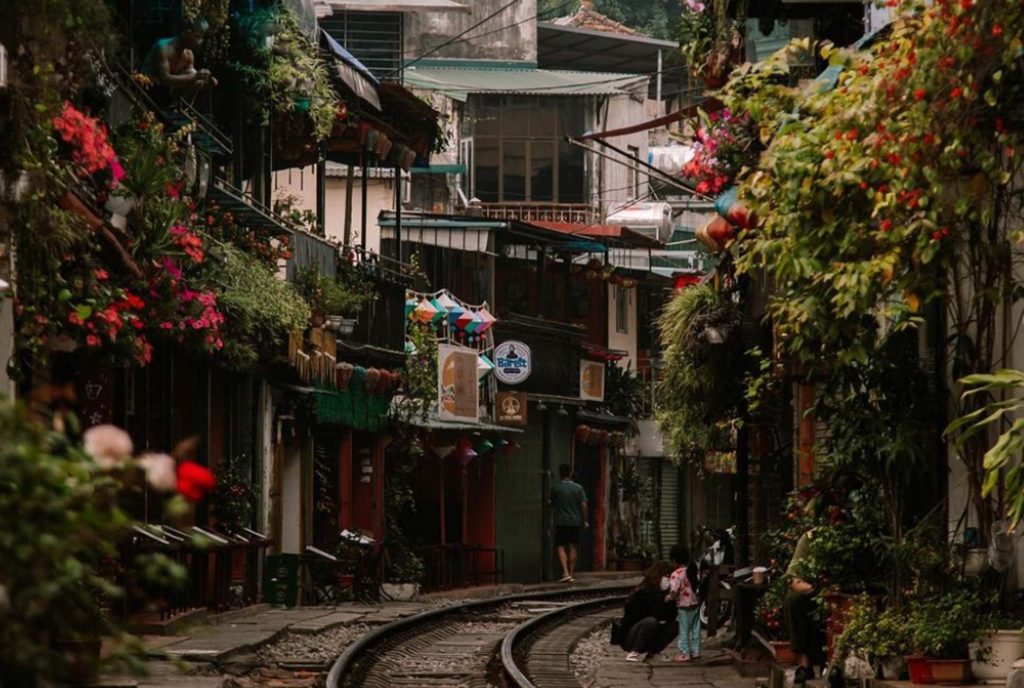
- Morning and Evening are Ideal: Trains typically pass through in the morning and evening, providing the best opportunities for viewing.
Local Customs and Taboos:
- Respect Local Residents: Please respect the privacy and space of residents. Avoid lingering in front of their homes or taking photos. Refrain from disrupting their daily lives.
- Maintain Quiet and Orderliness: Avoid loud noises or disturbances, especially when a train is approaching. Keep quiet to ensure safety.
- Respect Trains and Railway: Do not attempt to stand on the tracks to avoid any dangers. Stay away from the edges of the tracks and wait for the train in designated viewing areas.
- Do Not Litter: Keep the area clean and tidy. Take your trash with you or use appropriate trash bins.
Specific Cautionary Notes:
- Safety First: When a train is approaching, maintain a safe distance to prevent accidents.
- Avoid Peak Hours: To steer clear of crowds, try to visit during non-peak hours for a better viewing experience.
- Adhere to Local Regulations: Follow all signs and warnings, especially regulations and announcements from local authorities or managing entities.
Showing respect for local culture and residents, prioritizing safety and orderliness, will ensure you have the best experience while visiting Hanoi Train Street.
Looking ahead, I’m filled with anticipation and curiosity. I hope Hanoi Train Street can maintain its unique charm, allowing visitors to truly experience Vietnamese life. I also hope the locals can continue preserving their distinctive culture and way of life. This place has become a special corner for me, and I look forward to witnessing its continued evolution and growth in the years to come.
